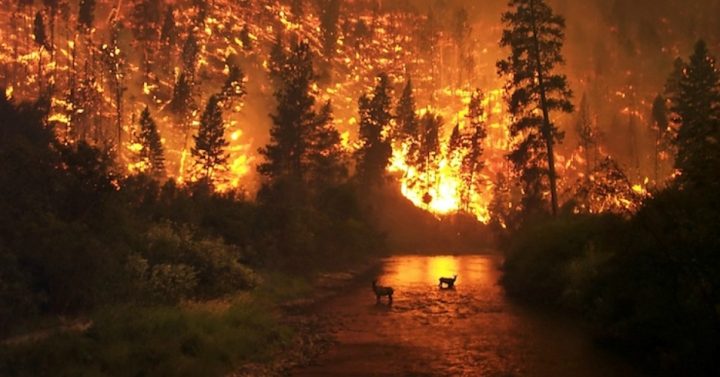By Jessica Corbett
As millions of people across the globe face extreme heat advisories, with temperatures even soaring beyond 90 degrees in Siberia last week, a recent study published in the British journal Nature Geoscience warns long-term global warming—and thus sea level rise—could be twice as bad as climate models project.
Study co-author Katrin Meissner of University of New South Wales, Australia remarked that “while climate model projections seem to be trustworthy when considering relatively small changes over the next decades, it is worrisome that these models likely underestimate climate change under higher emission scenarios, such as a ‘business as usual’ scenario, and especially over longer time scales.”
A team of 59 researchers from 17 countries assessed previous warm periods over the past 3.5 million years and found that during each of the three intervals analyzed, the rate of warming was much slower compared with the changes seen today—which are driven by burning fossil fuels that release heat-trapping greenhouse gases. As Meissner put it, “In terms of rate of change, we are in uncharted waters.”
The analysis focused on periods when global temperatures were 0.5-2°C above the 19th century pre-industrial temperatures, or the upper warming limit set by the Paris agreement. “Two degrees can seem very benign when you see it on paper,” Meissner told the Guardian, “but the consequences are quite bad and ecosystems change dramatically.”
Researchers found that warming of 1–2°C has caused land and ocean ecosystems as well as climate zones to shift toward the poles or to higher altitudes, and while they concluded that “there is a low risk of runaway greenhouse gas feedbacks for global warming of no more than 2°C,” they warned that “substantial regional environmental impacts can occur” under such conditions.
As the Oeschger Center for Climate Change Research (OCCR)—which partly funded the workshop for the analysis—explained, these ecosystem and climate zone shifts could ramp up permafrost thaw, which “may release additional carbon dioxide and methane to the atmosphere, driving additional warming.”
“This suggests the carbon budget to avoid 2°C of global warming may be far smaller than estimated,” emphasized lead author Hubertus Fischer of the University of Bern. “Accounting for the additional release of CO2 leaves even less room for error or delay as humanity seeks to lower its CO2 emissions and stabilize global climate within reasonable limits.”
Additionally, as OCCR outlined, the team found that warming even within the parameters of the Paris accord “will be sufficient to trigger substantial long-term melting of ice in Greenland and Antarctica and sea-level rise of more than six meters that will last for thousands of years.”
Acknowledging how sea level rise is already impacting coastal communities around the world, co-author Alan Mix of Oregon State University said, “This rise may become unstoppable for millennia, impacting much of the world’s population, infrastructure, and economic activity that is located near the shoreline.”
“The research also revealed how large areas of the polar ice caps could collapse and significant changes to ecosystems could see the Sahara Desert become green and the edges of tropical forests turn into fire-dominated savanna,” USA Today noted, though Meissner said that “we cannot comment on how far in the future these changes will occur.”
Originally published in CommonDreams.org






